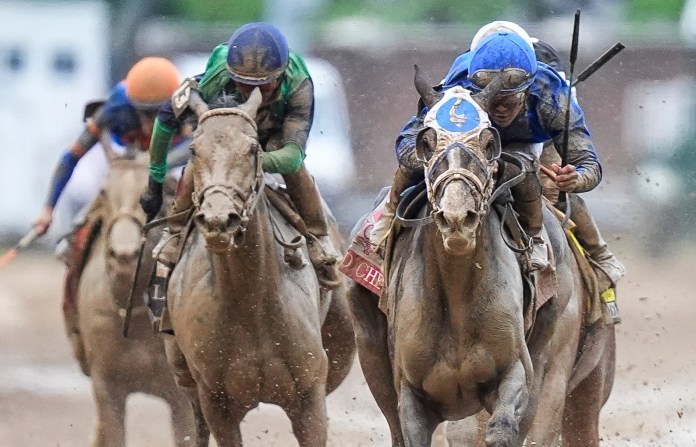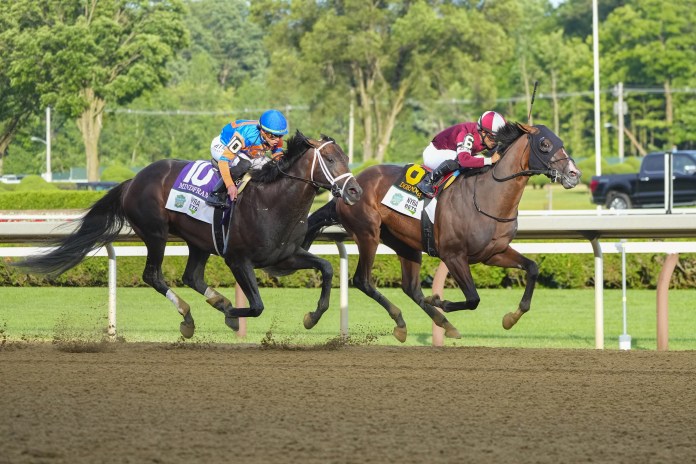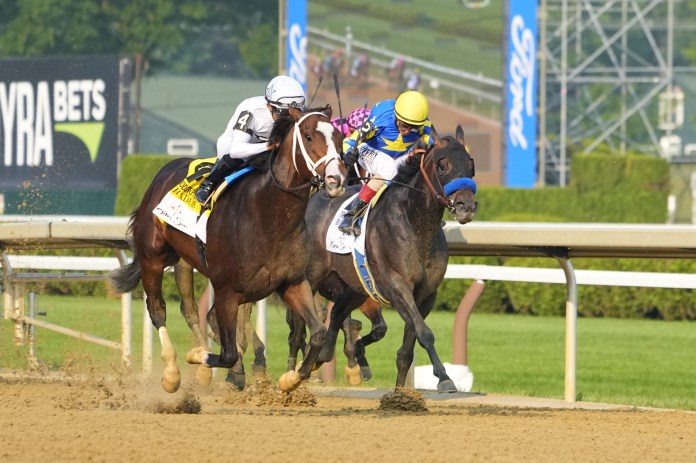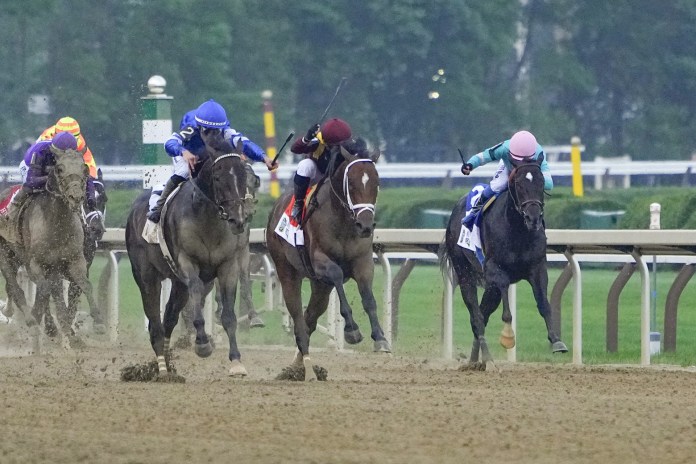
Horse Racing Betting Odds and Picks
Your One Stop Resource for Best Horse Racing Bets, Odds and Analysis
At VSiN, we're your go-to source for the best horse racing betting, tips, picks, and news. Stay ahead of the field with up-to-date articles covering various horse racing events across tracks like Gulfstream Park, Fair Grounds, Aqueduct, and more. Our comprehensive analysis ensures you stay fully informed and make smart horse betting decisions. Whether you're a seasoned horse racing enthusiast or a newbie bettor, VSiN provides horse racing odds, horse racing picks, and more to make your betting experience better. Check out the links in the menu above or go right to the headlines below!
Horse Racing News

Pro Tampa Bay Downs Predictions: 1/ST BET Horse Racing Picks for December 17
December 16, 2025
Tampa Bay Downs Predictions: We are excited to announce a renewed partnership with the fine folks and handicappers at 1/ST BET. Jeremy Plonk will be sharing...

Pro Horse Racing Picks for Saturday, December 13 from Mike Somich
December 13, 2025
Horse Racing Picks for Saturday, December 13 Make sure to check out VSiN At The Track to catch up on the latest horse racing news...

Pro Oaklawn Park Horse Racing Picks and Predictions for Saturday, December 13
December 12, 2025
Oaklawn Park Picks for Saturday, December 13: ALL MR. ED WANTS FOR CHRISTMAS: (Here’s hoping Ms. Ed & Mr. Bill are paying special attention). A...

Pro Oaklawn Horse Racing Picks and Predictions for Friday, December 12
December 11, 2025
Oaklawn Picks for Friday, December 12: TRACKING MR. ED: “The change will do you good,” is one of Mr. Ed’s favorite axioms as a public...

Pro Penn National Predictions: 1/ST BET Horse Racing Picks for December 11
December 10, 2025
Penn National Predictions: We are excited to announce a renewed partnership with the fine folks and handicappers at 1/ST BET. Jeremy Plonk will be sharing his...

Pro Tampa Bay Downs Predictions: 1/ST BET Horse Racing Picks for December 10
December 9, 2025
Tampa Bay Downs Predictions: We are excited to announce a renewed partnership with the fine folks and handicappers at 1/ST BET. Jeremy Plonk will be sharing...

Pro Aqueduct Horse Racing Picks and Predictions for Sunday, December 7
December 6, 2025
Aqueduct Picks for Sunday, December 7: RIDING FOR DOLLARS: With slightly more than three weeks remaining on the 2025 racing calendar, multiple-Eclipse Award-winning jockey Irad...

Pro Horse Racing Picks for Saturday, December 6 from Mike Somich
December 6, 2025
Horse Racing Picks for Saturday, December 6 Check out VSiN At The Track to catch up on the latest horse racing news and picks in...

Pro Aqueduct Horse Racing Picks and Predictions for Saturday, December 6
December 5, 2025
Aqueduct Picks for Saturday, December 6: HORSING AROUND AT BIG A: What’s a warm-blooded handicapper like Mr. Ed doing at a cold, dark and dreary...

Pro Remsen Stakes 2025 Entries, Horses, Odds, and Predictions
December 5, 2025
Remsen 2025 A big field of 12 Triple Crown hopefuls heads to the starting gate for the Remsen Stakes at Aqueduct Racetrack on Saturday. This...

Pro Gulfstream Park Predictions: 1/ST BET Horse Racing Picks for December 4
December 3, 2025
Gulfstream Park Predictions: We are excited to announce a renewed partnership with the fine folks and handicappers at 1/ST BET. Jeremy Plonk will be sharing his...

Pro Tampa Bay Downs Predictions: 1/ST BET Horse Racing Picks for December 3
December 2, 2025
Tampa Bay Downs Predictions: We are excited to announce a renewed partnership with the fine folks and handicappers at 1/ST BET. Jeremy Plonk will be sharing...


